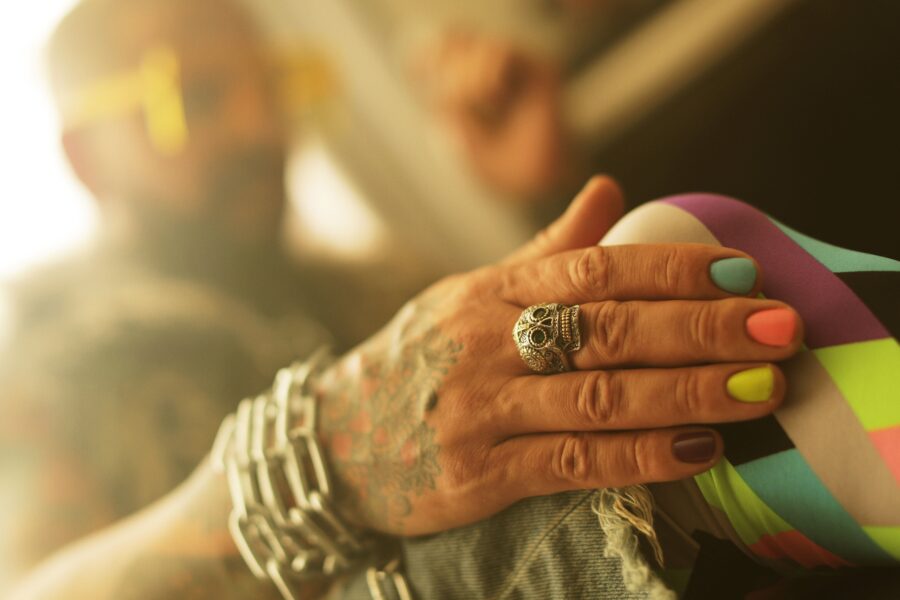The symbolism of the skull ring has evolved over centuries, yet it continues to hold a captivating presence in the world of jewelry. It has become an iconic symbol of rebellion, power, and mystery, its allure transcending the confines of time and fashion. From the rugged fingers of pirates to the punk rockers’ rebellious fists, the skull ring has embodied various narratives and played different roles, each era offering a unique interpretation and purpose to this intriguing piece of jewelry.
This article will explore the skull ring’s fascinating evolution, starting from its historical roots and making our way to its current status in modern fashion. Understanding its rich history will give us a broader perspective on its current role and may reveal what the future holds for this enduring piece of jewelry.
The Pirate Era: Symbol of Danger and Death
The skull ring’s historical origins can be traced back to the Golden Age of Piracy in the 17th and 18th centuries. It was a common sight among pirates, often representing danger and death. According to research conducted by the Maritime Archaeology Trust, pirates used the skull and crossbones symbol, known as the Jolly Roger, to signify their outlaw status and intimidate their targets. The skull ring served as a personal totem, reminding wearers and onlookers of life’s transience and mortality.
Victorian Memento Mori: Reminder of Mortality
During the Victorian Era, the skull ring took on a slightly different, but related significance. It became a part of the “memento mori” tradition – Latin for “remember you must die.” In a study published in the Journal of Victorian Culture, it was revealed that these pieces served as personal reminders of mortality in a period marked by high mortality rates. This prompted a culture fixated on death and the afterlife, and the skull ring became a tangible representation of this collective consciousness.
The Biker Subculture: Emblem of Freedom and Nonconformity
In the mid-20th century, as society sought to find its post-war identity, skull rings were wholeheartedly embraced by a group that prized independence above all – the biker subculture. The American Motorcyclist Association has noted that the skull ring, within this group, evolved to represent more than mortality; it became a symbol of freedom, non-conformity, and a powerful statement of resistance against mainstream societal norms.
Bikers, often portrayed as the rebels of society, saw a reflection of their untamed spirit and refusal to abide by conventional rules in the skull ring. The rings, heavy and hard, served as a stark contrast to the delicate and ornate jewelry of the era, underlining their wearers’ defiance. This nonconformist symbol was not only part of their wardrobe but also an essential aspect of their identity.
Punk Rock: A Symbol of Rebellion and Anarchy
The emergence of the skull ring in the punk rock scene in the late 20th century marked another milestone in its evolutionary tale. According to an article from Rolling Stone, punk rockers, much like the bikers and pirates before them, employed skull rings as badges of rebellion against societal conventions and established order. However, their motivation was often rooted in a deep-seated angst and dissatisfaction with perceived societal inequalities and oppressive structures.
The skull ring, thus, took on the symbolism of anarchy, mirroring the punk movement’s ethos of individual freedom and a rebellious spirit. It was not merely an accessory, but a tangible representation of counterculture, a statement against mainstream society’s preconceptions, and a provocative sign of anarchy. This attitude resonated with the punk genre, whose songs and performances were often politically charged, challenging the status quo, and advocating for radical change.
Contemporary Fashion: Power and Individuality
Today, skull rings have made their mark in contemporary fashion. Far from being mere accessories, they’re seen as statements of personal style, individuality, and even power. In a report by Vogue, it was stated that many fashion-forward individuals and celebrities are often seen wearing skull rings, embracing the symbol as part of their aesthetic and personal brand.
In this transformative tale of the skull ring, we’ve seen it evolve from a sign of danger to a symbol of rebellion, freedom, and individuality. We’ve uncovered how it served as a tool for expressing societal norms, personal beliefs, and cultural trends, reflecting the attitudes and spirit of the times.
As we move forward, it will be interesting to see where the skull ring goes next. Will it retain its rebellious symbolism, or will it morph into something entirely different? With its deeply ingrained cultural significance and ever-evolving interpretations, one thing is certain – the skull ring will continue to be a captivating element of personal adornment.

